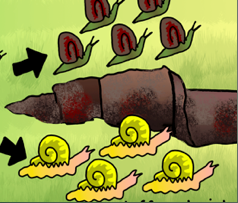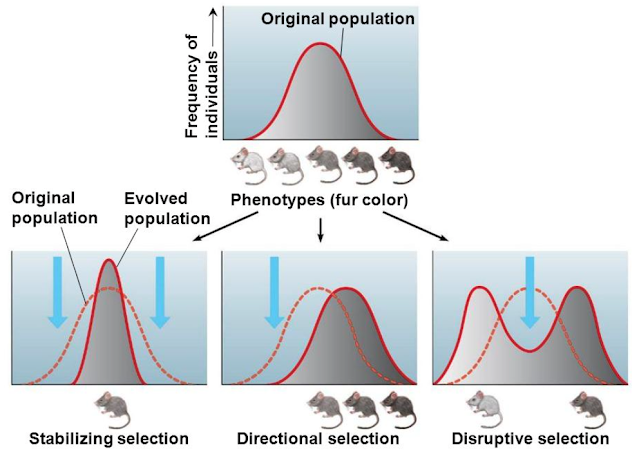Biology Index
Where are we going with this? The information on this page should increase understanding related to this standard: Identify chronological patterns of change and communicate that biological evolution is supported by multiple lines of empirical evidence that identify similarities inherited from a common ancestor (homologies).
Article includes ideas, images, and content from Troy Smigielski (2022-01)
Chronological Patterns of Change
(We should put some time into this!)
When a mutation leads to a favorable gene that gives one an advantage, it is called an adaptation. When adaptations survive and reproduce in a population, it is referred to as natural selection. Natural selection can drastically change the phenotypes of an animal given enough time.
Remember that a phenotype is the physical expression of the genetic code. The phenotype is what is seen, whereas the genotype is the genes that are present.
There are 3 main ways phenotypes can change via natural selection. They are all caused by environmental pressures that would make a certain phenotype unfavorable.
Favorable Traits
Before we look at these types, we need to get an understanding of a biology concept: being favored.
A favorable trait or behavior is one that increases an organism's fitness; it helps the organism live, thrive, survive, and reproduce. Favored traits are the ones that most readily lead to the survival of an organism.
Stabilizing Selection
Stabilizing selection is a type of natural selection where the population average favors intermediate values for a trait.
Directional Selection
Directional selection is a type of natural selection where the population average favors one extreme value over another for a trait.
Disruptive Selection
Disruptive selection is a type of natural selection where the population average favors both extreme values for a trait.
Summary
So, any of the three patterns can be present and they all can lead to certain phenotypes being preferred—that is to say that the environmental pressure will prevent some specific phenotypes from being passed on while other phenotypes will be removed from the population.
Those three patterns are one way that phenotypes can shift over time.
If a gene is changed, the allele frequencies of that population also change.
Allele frequency is a measure of how often a certain allele appears in a population.
How many alleles do you have for each gene? You will recall that everyone has two allele for any give trait, and they can be the same or different.
When both genes are the same, the trait is said to be homozygous. When they are different, then it is heterozygous.
If all rabbits in a population are heterozygous, the “G” allele frequency is 50% and the “g” allele frequency is 50%.
If a mutation causes a gene to change, then alleles will also change randomly.
A random change in allele frequency is called genetic drift.
This is much easier to see in smaller populations.
Genetic Drift
There are two types of genetic drift events:
- Founder Effect
- Bottleneck Effect
Founder Effect
The Founder Effect is a situation where allele frequencies change due to the migration of a small subgroup into a population.
Bottleneck Effect
The Bottleneck Effect is a situation where there is some sort of disaster that reduces a population to a very small amount.
This typically reduces genetic variation.

































